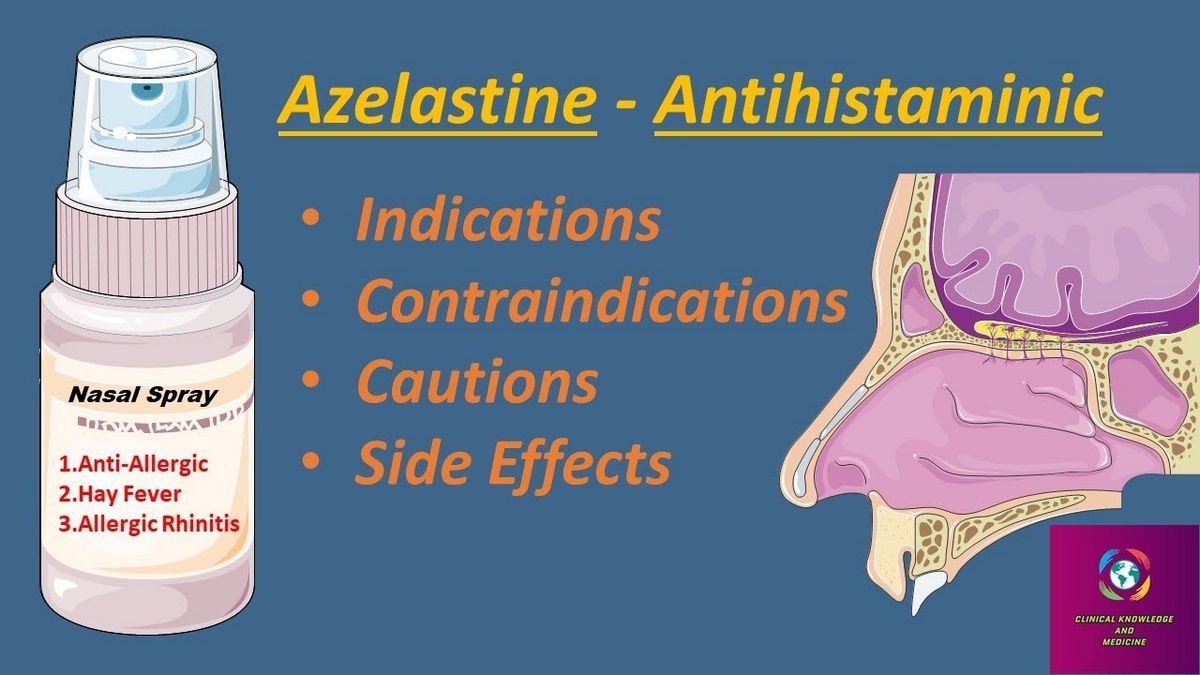
Contents
azelastine drops – ophthalmic, Optivar
Medication Uses How To Use Side Effects Precautions Drug Interactions Overdose Notes Missed Dose Storage USES: Azelastine is used to treat itching eyes caused by allergies (allergic conjunctivitis). This medication is an antihistamine. It works by blocking certain natural substances (such as histamines) responsible for allergic symptoms.Do not use this medication to treat redness and irritation due to wearing contact lenses. HOW TO USE: To apply eye drops, wash your hands first. To avoid contamination, do not touch the dropper tip or let it touch your eye or any other surface.Remove contact lenses before using this medication because it contains a preservative that can be absorbed by them. Wait at least 10 minutes after using this medication before putting the lenses back in. Do not wear contact lenses if your eyes are red.Use this medication usually twice a day or as directed by your doctor. Tilt your head back, look upward and pull down the lower eyelid to make a pouch. Hold the dropper directly over your eye and place one drop into the pouch. Look downward and gently close your eyes for 1 to 2 minutes. Place one finger at the corner of your eye (near the nose) and apply gentle pressure. This will prevent the medication from draining out. Try not to blink and do not rub your eye. Repeat these steps for your other eye if so directed.Do not rinse the dropper. Replace the dropper cap after each use.If you are using another kind of eye medication (e.g., drops or ointments), wait at least 5 minutes before applying other medications. Use eye drops before eye ointments to allow the eye drops to enter the eye.Inform your doctor if your condition persists or worsens. SIDE EFFECTS: This medication may temporarily sting or burn your eyes for a minute or two when applied. Temporary blurred vision, headache, or a bitter taste in your mouth may also occur. If any of these effects persist or worsen, notify your doctor or pharmacist promptly.Remember that your doctor has prescribed this medication because he/she has judged that the benefit to you is greater than the risk of side effects. Many people using this medication do not have serious side effects.Tell your doctor immediately if any of these unlikely but serious side effects occur: trouble breathing, eye pain.A very serious allergic reaction to this drug is unlikely, but seek immediate medical attention if it occurs. Symptoms of a serious allergic reaction may include: rash, itching/swelling (especially of the face/tongue/throat), severe dizziness, trouble breathing.This is not a complete list of possible side effects. If you notice other effects not listed above, contact your doctor or pharmacist.In the US -Call your doctor for medical advice about side effects. You may report side effects to FDA at 1-800-FDA-1088.In Canada – Call your doctor for medical advice about side effects. You may report side effects to Health Canada at 1-866-234-2345.
PRECAUTIONS: Before using azelastine, tell your doctor or pharmacist if you are allergic to it; or if you have any other allergies. This product may contain inactive ingredients (such as preservatives like benzalkonium chloride), which can cause allergic reactions or other problems. Talk to your pharmacist for more details.Before using this medication, tell your doctor or pharmacist your medical history.This drug may cause temporary blurred or unstable vision after you apply it. Do not drive, use machinery, or do any activity that requires clear vision until you are sure you can perform such activities safely.This medication should be used only when clearly needed during pregnancy. Discuss the risks and benefits with your doctor.It is not known whether this drug passes into breast milk. Consult your doctor before breast-feeding. DRUG INTERACTIONS: Your healthcare professionals (e.g., doctor or pharmacist) may already be aware of any possible drug interactions and may be monitoring you for it. Do not start, stop, or change the dosage of any medicine before checking with them first.Before using this medication, tell your doctor or pharmacist of all prescription and nonprescription/herbal products you may use.Keep a list of all your medications with you, and share the list with your doctor and pharmacist. OVERDOSE: This medicine may be harmful if swallowed. If swallowing or overdose is suspected, contact a poison control center or emergency room immediately. US residents can call their local poison control center at 1-800-222-1222. Canada residents can call a provincial poison control center. NOTES: Do not share this medication with others.Consult your doctor for additional ways to minimize and relieve your symptoms (e.g., avoiding irritants that trigger allergies, using cold compresses and lubricating eye drops). MISSED DOSE: If you miss a dose, use it as soon as you remember. If it is near the time of the next dose, skip the missed dose and resume your usual dosing schedule. Do not double the dose to catch up. STORAGE: Store upright and tightly closed between 36-77 degrees F (2-25 degrees C) away from light and moisture. Do not store in the bathroom. Keep all medicines away from children and pets.Do not flush medications down the toilet or pour them into a drain unless instructed to do so. Properly discard this product when it is expired or no longer needed. Consult your pharmacist or local waste disposal company for more details about how to safely discard your product. Information last revised February 2014. Copyright(c) 2014 First Databank, Inc.
QUESTION
Related Disease Conditions
Pink Eye (Conjunctivitis)
Pinkeye, also called conjunctivitis, is redness or irritation of the conjunctivae, the membranes on the inner part of the eyelids and the membranes covering the whites of the eyes. These membranes react to a wide range of bacteria, viruses, allergy-provoking agents, irritants, and toxic agents.
Allergy (Allergies)
An allergy refers to a misguided reaction by our immune system in response to bodily contact with certain foreign substances. When these allergens come in contact with the body, it causes the immune system to develop an allergic reaction in people who are allergic to it. It is estimated that 50 million North Americans are affected by allergic conditions. The parts of the body that are prone to react to allergies include the eyes, nose, lungs, skin, and stomach. Common allergic disorders include hay fever, asthma, allergic eyes, allergic eczema, hives, and allergic shock.
Human Immunodeficiency Virus (HIV)
HIV (human immunodeficiency virus) infection left untreated causes AIDS (acquired immunodeficiency syndrome). The human immunodeficiency virus (HIV) is a type of virus called a retrovirus, which can infect humans when it comes in contact with tissues that line the vagina, anal area, mouth, or eyes, or through a break in the skin. HIV infection is generally a slowly progressive disease in which the virus is present throughout the body at all stages of the disease. Three stages of HIV infection have been described. The initial stage of infection (primary infection), which occurs within weeks of acquiring the virus, often is characterized by the flu- or mono-like illness that generally resolves within weeks. The stage of chronic asymptomatic infection (meaning a long duration of infection without symptoms) lasts an average of eight to 10 years without treatment. The stage of symptomatic infection, in which the body’s immune (or defense) system has been suppressed and complications have developed, is called the acquired immunodeficiency syndrome (AIDS). The symptoms are caused by the complications of AIDS, which include one or more unusual infections or cancers, severe loss of weight, and intellectual deterioration (called dementia). When HIV grows (that is, by reproducing itself), it acquires the ability to change (mutate) its own structure. These mutations enable the virus to become resistant to previously effective drug therapy. The goals of drug therapy are to prevent damage to the immune system by the HIV virus and to halt or delay the progress of the infection to symptomatic disease. Therapy for HIV includes combinations of drugs that decrease the growth of the virus to such an extent that the treatment prevents or markedly delays the development of viral resistance to the drugs. The best combination of drugs for HIV are those that effectively suppress viral replication in the blood and also are well tolerated and simple to take so that people can take the medications consistently without missing doses.
HIV (human immunodeficiency virus) infection left untreated causes AIDS (acquired immunodeficiency syndrome). The human immunodeficiency virus (HIV) is a type of virus called a retrovirus, which can infect humans when it comes in contact with tissues that line the vagina, anal area, mouth, or eyes, or through a break in the skin. HIV infection is generally a slowly progressive disease in which the virus is present throughout the body at all stages of the disease. Three stages of HIV infection have been described. The initial stage of infection (primary infection), which occurs within weeks of acquiring the virus, often is characterized by the flu- or mono-like illness that generally resolves within weeks. The stage of chronic asymptomatic infection (meaning a long duration of infection without symptoms) lasts an average of eight to 10 years without treatment. The stage of symptomatic infection, in which the body’s immune (or defense) system has been suppressed and complications have developed, is called the acquired immunodeficiency syndrome (AIDS). The symptoms are caused by the complications of AIDS, which include one or more unusual infections or cancers, severe loss of weight, and intellectual deterioration (called dementia). When HIV grows (that is, by reproducing itself), it acquires the ability to change (mutate) its own structure. These mutations enable the virus to become resistant to previously effective drug therapy. The goals of drug therapy are to prevent damage to the immune system by the HIV virus and to halt or delay the progress of the infection to symptomatic disease. Therapy for HIV includes combinations of drugs that decrease the growth of the virus to such an extent that the treatment prevents or markedly delays the development of viral resistance to the drugs. The best combination of drugs for HIV are those that effectively suppress viral replication in the blood and also are well tolerated and simple to take so that people can take the medications consistently without missing doses.


